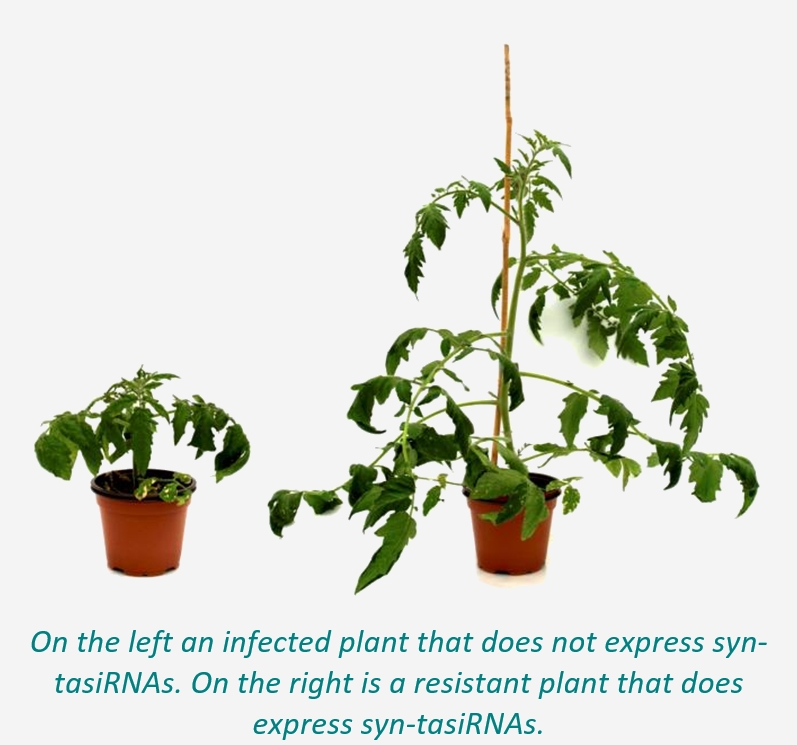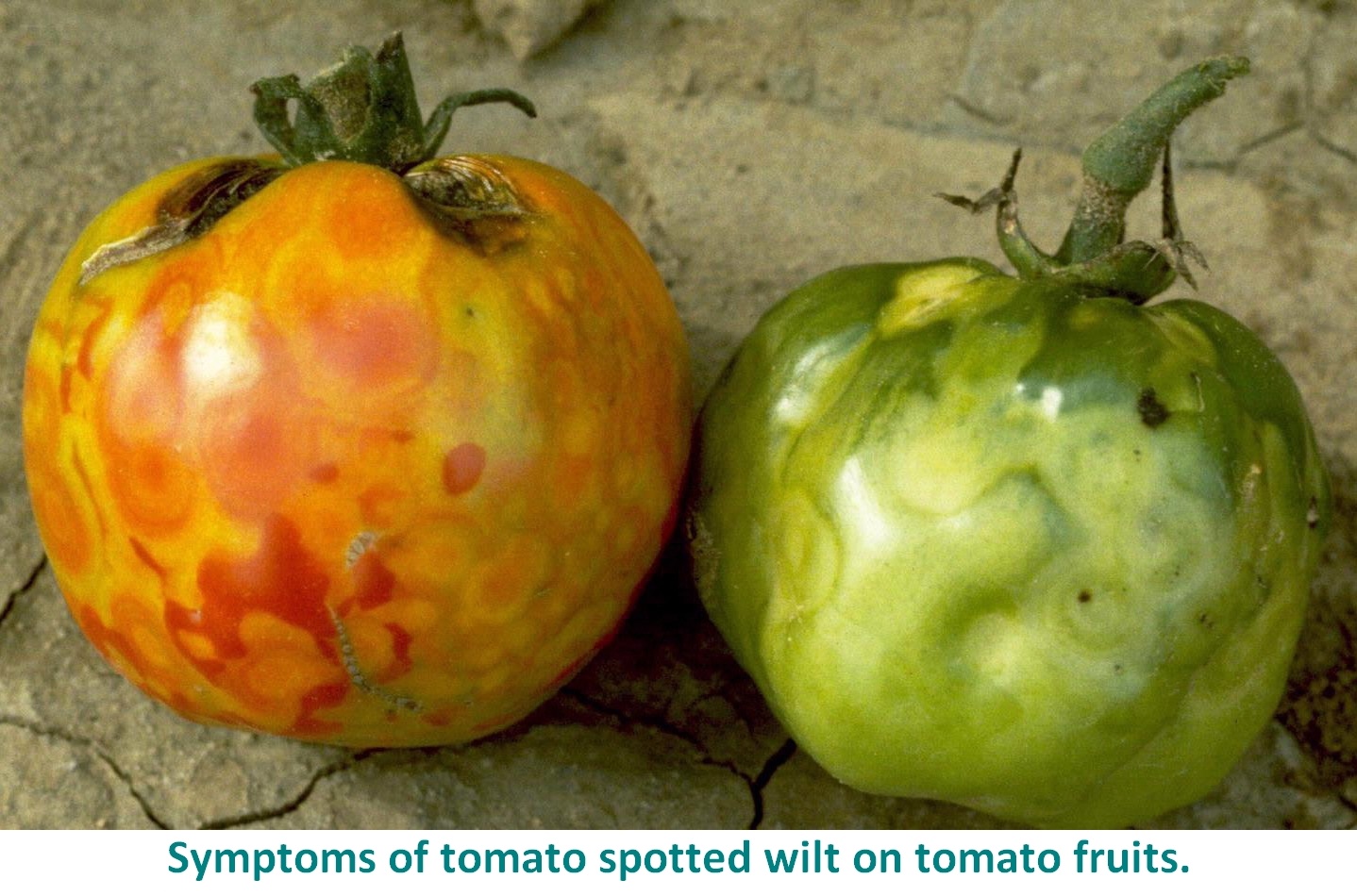Press release
, François-Xavier Branthôme
Gene silencing allows selective "on" and "off" switching of genes
Through a technique regulating gene expression, a group of researchers from the Institute of Molecular and Cellular Biology of Plants (IBMCP) - mixed center of the Polytechnic University of Valencia (UPV) and the Higher Council for Scientific Research (CSIC) - has managed to produce tomato plants resistant to the tomato spotted wilt virus (TSWV).
Gene silencing is a technique that allows selective "on" and "off" switching of genes and has been used successfully in plants to induce resistance against some viruses.
According to Alberto Carbonell, a researcher at IBMCP, “one of the most successful RNAi-based antiviral techniques is to induce the expression of small artificial RNA's designed to inhibit the replication of viral RNA's. In our project, we have worked with two types of small artificial RNA's: artificial microRNA's, or amiRNA, and small synthetic transactive interfering RNA,'s or syn-tasiRNA. We have then analyzed the level of resistance to viruses capable of causing great losses, such as the TSWV, in plants that express a single antiviral amiRNA and in others that simultaneously express four antiviral syn-tasiRNA, each with a different target site.”
 The work of the IBMCP researchers has shown that plants that express a single antiviral amiRNA are more susceptible to TSWV, because the virus easily accumulates mutations at the amiRNA target site, allowing it to evade its action and continue with the infection. In contrast, plants that simultaneously express four antiviral syn-tasiRNA's are, for the most part, totally resistant to TSWV, probably due to the combined effect of each syn-tasiRNA.
The work of the IBMCP researchers has shown that plants that express a single antiviral amiRNA are more susceptible to TSWV, because the virus easily accumulates mutations at the amiRNA target site, allowing it to evade its action and continue with the infection. In contrast, plants that simultaneously express four antiviral syn-tasiRNA's are, for the most part, totally resistant to TSWV, probably due to the combined effect of each syn-tasiRNA.
"With our work we have managed to produce tomato plants resistant to TSWV and demonstrate the usefulness and suitability of the syn-tasiRNA-based strategy to generate crops resistant to viral infections," said Carbonell.
Some complementary data
 Alberto Carbonell et al. Multi?targeting of viral RNAs with synthetic trans ?acting small interfering RNAs enhances plant antiviral resistance, The Plant Journal (2019). DOI: 10.1111/tpj.14466
Alberto Carbonell et al. Multi?targeting of viral RNAs with synthetic trans ?acting small interfering RNAs enhances plant antiviral resistance, The Plant Journal (2019). DOI: 10.1111/tpj.14466
 Tomato spotted wilt virus
Tomato spotted wilt virus
Tomato spotted wilt virus (TSWV) causes a range of symptoms, depending on the age of plants, weather conditions and nutritional status. Symptoms include yellow mottling of leaves, ringspots, chlorotic blotches and line/mosaic patterns. Wilting and purpling of leaves can occur and necrotic lesions can develop on stems of affected plants. Plants can be stunted, have reduced vigour, or in some cases die. Symptoms are similar to, and can be confused with, nutritional disorders, bacterial or fungal diseases, or improper management techniques.

TSWV is transmitted by seven thrips species, (onion thrips (Thrips tabaci), melon thrips (Thrips palmi), tomato thrips (Frankliniella schultzei), western flower thrips (WFT) (Frankliniella occidentalis), etc.), with WFT being the most efficient vector. Thrips remain infectious for life but do not pass the virus to their offspring through the egg. Approximately five days are required from the time the thrips are infected with the virus to when the thrips are able to transmit the virus to another plant.
It is not spread by other sap-sucking insects such as aphids, whiteflies and leafhoppers, but can be spread by the vegetative propagation of infected plants, such as cuttings and bulbs. The virus is not spread in seed or on equipment, does not survive in soil or decaying crop residues, and is not spread by handling plants.
It is favoured by an abundance of weed species that host thrips colonies, climatic conditions favouring thrip population growth. High thrips numbers and low temperatures.
TSWV ?is a major cause of crop loss. It has one of the largest host ranges of any plant virus, infesting over 900 species of weeds, field crops, vegetables and ornamentals. Many hosts are in the potato (Solanaceae), aster (Asteraceae) and legume (Fabaceae) families.?Crops that frequently suffer major losses from TSWV include lettuce, capsicum, tomato, potato, and ornamental crops such as aster, statice, calendula and dahlia. Other crop hosts that suffer sporadic losses include peanut, tobacco, chickpea, rhubarb, eggplant, celery and a range of ornamental species.
Sources: noticiasdelaciencia.com, hortidaily.com, phys-org.cdn.ampproject.org


 The work of the IBMCP researchers has shown that plants that express a single antiviral amiRNA are more susceptible to TSWV, because the virus easily accumulates mutations at the amiRNA target site, allowing it to evade its action and continue with the infection. In contrast, plants that simultaneously express four antiviral syn-tasiRNA's are, for the most part, totally resistant to TSWV, probably due to the combined effect of each syn-tasiRNA.
The work of the IBMCP researchers has shown that plants that express a single antiviral amiRNA are more susceptible to TSWV, because the virus easily accumulates mutations at the amiRNA target site, allowing it to evade its action and continue with the infection. In contrast, plants that simultaneously express four antiviral syn-tasiRNA's are, for the most part, totally resistant to TSWV, probably due to the combined effect of each syn-tasiRNA.































